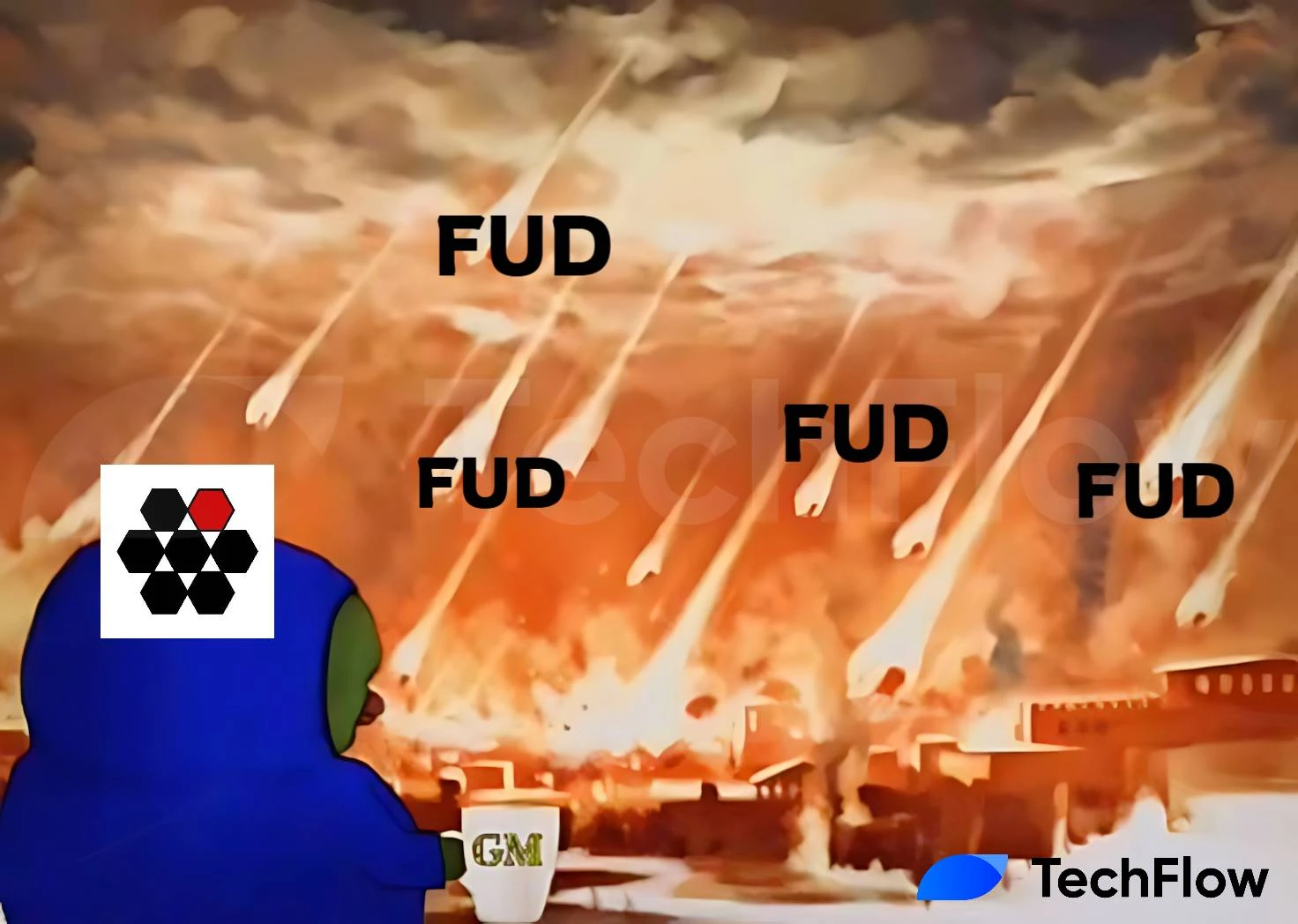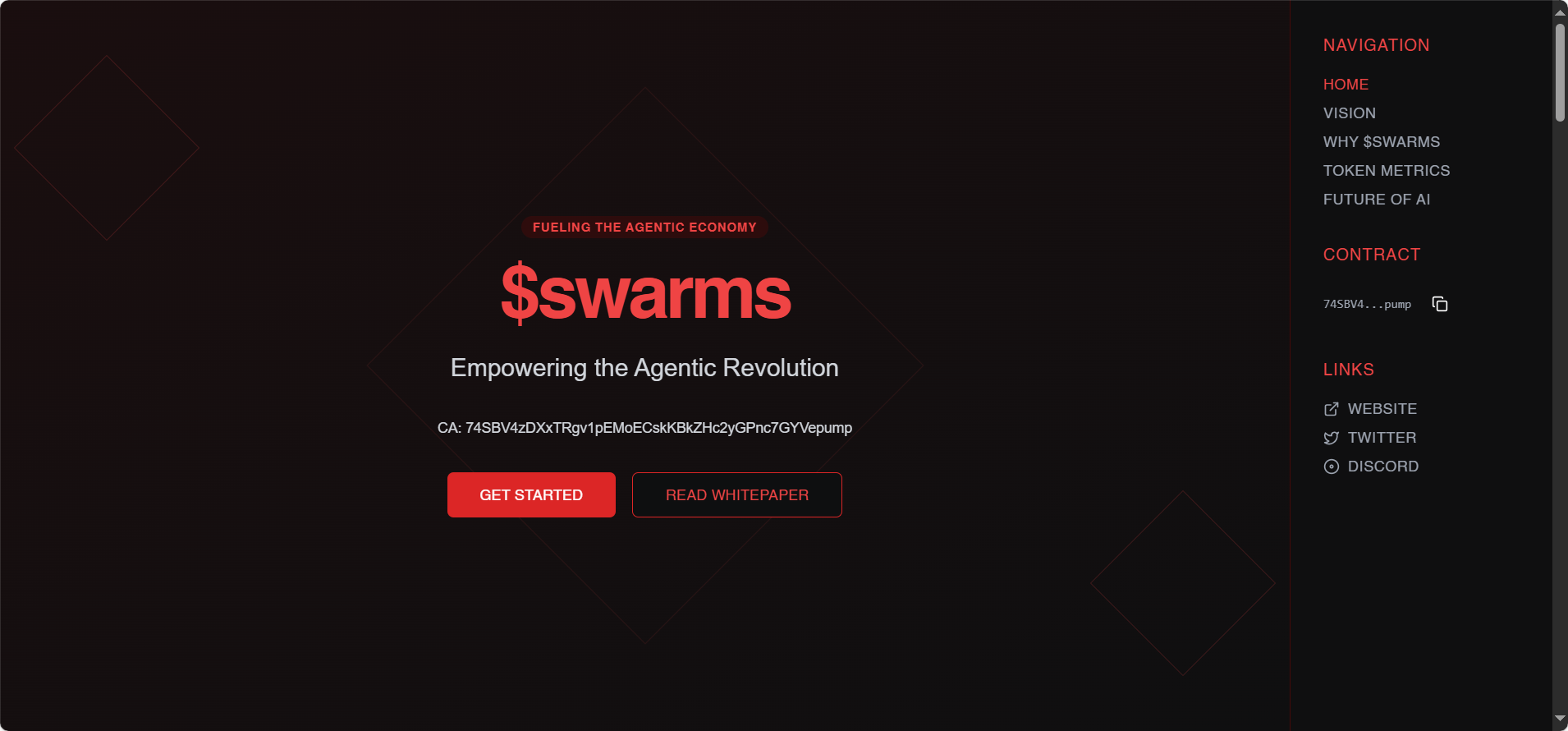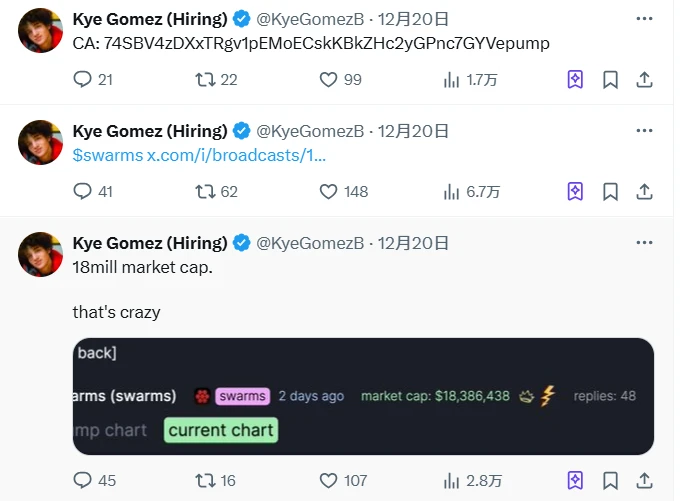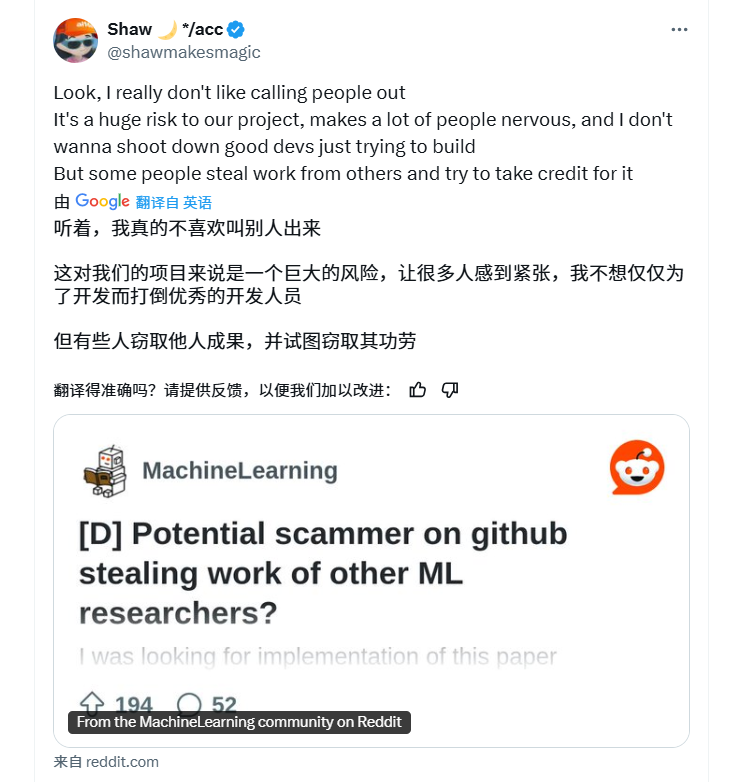Fast pass against the market trend and violent wash, will $swarms be the next $arc?
Originalautor: TechFlow
When Bitcoin fell and altcoins were all in the red, the memes on the primary chain market have temporarily become the markets safe haven. Although some high-market-cap memes that have been listed on the exchange are inevitably affected by the market and continue to fall, for new hot assets (or more appropriately called fast-passing assets), the panic market sentiment can only cause some superficial injuries at most.
Last Friday, the enterprise-level multi-agent collaboration framework Swarms announced on Twitter that it had “claimed” the $swarms token issued by Pump.Fun. The reason for “claiming” is that $swarms was not issued on the day of the official announcement, but existed two days earlier. At that time, $swarms, which had no official endorsement, might have been regarded as an ordinary “scam” by the market, and its market value was once at a low point of $6,000, which no one cared about.
With the example of $arc, the framework narrative of $swarms made the market buy it without hesitation. On Black Friday when all the altcoins plummeted, $swarms only went sideways for a few hours during the most panicky hours in the market, and then directly broke through the market value of 70 million US dollars.
By combining the relevant information provided by Swarms offizielle Website Und technical documentation , we have a preliminary understanding of what the Swarms framework does.
Hinweis: Die Preise für Meme-Token schwanken stark und es besteht ein hohes Risiko. Anleger sollten die Risiken vollständig abwägen und mit Vorsicht teilnehmen. Dieser Artikel gibt nur Informationen weiter, die auf Markt-Hotspots basieren. Der Autor und die Plattform übernehmen keine Garantie für die Vollständigkeit und Richtigkeit des Inhalts des Artikels. Gleichzeitig enthält dieser Artikel keine Anlageberatung.
Another technical entry?
In addition to the public token address on the homepage of the Swarms official website, the developer of the Swarms framework @KyeGomezB also continued to discuss news about the token on the same day.
According to Kye Gomes Github homepage , the Swarms framework has received more than 2,000 stars ($arcs rig framework currently has 1,300 stars).
With the Github certification, at least the hard-core technical identity of the $swarms token is confirmed.
Enterprise-level multi-agent collaboration framework
The Swarms framework was not originally a Crypto Native specifically serving Web3. Its core positioning is just as the original meaning of the word Swarms – a swarm, an enterprise-level multi-agent collaboration framework. It is not just a simple AI development tool, but a complete solution that focuses on solving practical problems faced by enterprises in the process of AI implementation.
In practical applications, Swarms provides a complete tool chain that enables enterprises to easily build and manage collaboration between multiple AI agents. These AI agents can be different language models, professional tools, or customized agents. Under the scheduling of Swarms, they can work together seamlessly to complete complex business tasks.
From the perspective of technical architecture, the Swarms framework includes the following core components:
-
Task scheduling system: responsible for decomposing complex tasks and assigning them to appropriate AI agents
-
Agent management module: manages the life cycle and status of each AI agent
-
Communication middleware: ensures accurate and efficient information transmission between agents
-
Monitoring and logging system: real-time tracking of the operating status of the entire system
At the enterprise application level, Swarms provides:
-
High availability guarantee: automatic fault tolerance and recovery mechanism
-
Complete monitoring system: real-time tracking of AI agent performance and status
-
Flexible scalability: easily add new AI capabilities and business logic
-
Security considerations: Complete permission management and data protection mechanism
To understand how Swarms works, we can use the analogy of a symphony orchestra:
Imagine a large orchestra playing a symphony. Traditional AI solutions are like an all-round player, trying to play all instruments at the same time. Swarms, on the other hand, allows each musician (AI agent) to focus on his or her own expertise and perform in coordination under the coordination of the conductor (Swarms framework). The score is the standardized task flow of the entire system, and rehearsal is the continuous optimization process of the system.
For example, in an e-commerce scenario, when a user needs personalized shopping recommendations, the system will automatically coordinate multiple professional agents. The user portrait analysis agent will deeply understand the users needs, the product recommendation agent will select the most suitable products based on this, the evaluation analysis agent will be responsible for sorting out user feedback, and finally the dialogue assistant agent will integrate this information into friendly suggestions and present them to the user. These agents perform their respective duties and can work together seamlessly to ultimately provide users with accurate services.
What is the difference between it and other projects in the same track?
As products in the same AI framework track, whether it is $ai16z$ELIZA with the ELIZA framework or $arc based on the rig framework, their prices show the markets recognition of the concept of underlying infrastructure.
So is the Swarms framework in competition with the other two projects? Or can they collaborate with each other by leveraging their strengths?
Twitter user @tme l0 211 summarized the possible connections between the three frameworks:
-
There is no problem with the standard and framework evolution logic from ELIZA to RIG (ARC), and then to Swarms. ELIZA focuses on lightweight and fast deployment to create AI Agents, and ARC hopes to use the Rust language to improve the resource optimization and performance of the AI Agent system at work. Swarms aims to build a complex task decomposition and coordination framework for multi-AI Agent collaboration. Its multi-agent hybrid orchestration mechanism, flexible combination of serial and parallel mechanisms, and multi-level memory processing architecture make sense just by looking at the necessity and development direction of its technical evolution logic.
-
Theoretically, Swarms can integrate ARC, and ARC can optimize ELIZA. All three frameworks have the idea of modular design, and their technical vision is getting more and more ambitious. This may be a hidden concern of being too conceptualized. It is still the same point of view that the current standard framework is far from being judged. We should observe the improvement of the framework code base and the landing of the single AI application based on its framework. If we are not sure about the pros and cons of the early technology, we should focus on the landing application; technology can float in the air, but the application interaction experience will definitely fall to the ground.
Obviously, whether it is ELIZA, RIG or Swarms, its feasibility and expansion space are still in the early stages. Different language frameworks focus on solving different problems in the process of large-scale adoption of AI, and mutual collaboration is also an unavoidable theme among various frameworks in the future.
The founder was questioned, and the price of the currency fluctuated
While the market bought into the $swarms narrative at the outset, things did not always run smoothly.
On the day when $swarms tokens became popular, Shaw @shawmakesmagic, the founder of $ai16z, publicly dissed @KyeGomezB , the developer of the Swarms framework, on Twitter, saying, I really dont like to publicly point out other peoples problems. Doing so is a huge risk for our project, it will make a lot of people nervous, and I dont want to hit those hard-working developers. But some people will steal the work of others and try to take the credit for themselves. He also cited a 23-year-old Reddit post to prove Kyes plagiarism. The article pointed out that a Github repo may have traces of stealing the work of others, and the repo belongs to Swarms developer Kye.
Shaws fud also caused the price of $swarms to nearly halve. However, facing this fud, Swarms founder Kye was not convinced. While responding on Twitter, he also released a new token $mcs based on the Swarms framework application Medicalswarm, intending to prove that his framework is not useless, but really something.
It may be that Kye is not familiar with the gameplay of AI Meme. When the consensus of $swarms is not yet solid and the price of the coin is still on a downward trend, the operation of issuing new coins was directly regarded by many players who did not know the reason as the Dev of $swarms did not want this plate anymore and $swarms was not worth playing. Therefore, the launch of $mcs did not save $swarms at the beginning, but made $swarms fall further. The market value fell from a high of 74 million US dollars to 6 million US dollars, and the new coin $mcs plummeted together.
However, Kye, who is still inexperienced, saw this and realized that his way of handling the situation might be wrong. He then urgently started a live broadcast to announce that he really wanted to build it seriously, and live broadcasted that he would lock up his $swarms tokens for one year. Maybe the founder really wanted to prove himself in the face of various fuds, or there was an expert behind him who took advantage of the unstable consensus to make such an operation to collect chips. In short, this wave of three washes and three exposures did wash away many early players, and the market that came to its senses also bought $swarms again, and the market value gradually recovered and stabilized at around 30 million US dollars.
Zusammenfassung
As of writing, the price trend of $swarm has gradually calmed down, and the market value is still around 40 million.
$swarms speed pass script is somewhat similar to $arc. As a token with a technical background, the market bought it crazily after fermentation, and the market value of $swarms reached tens of millions. However, it will take some time for the market to realize the realization and the community to reach a consensus, so this type of currency will inevitably fluctuate in the early stage.
Whether this project is really as valuable as the founder has proven, the market will make a corresponding choice.
This article is sourced from the internet: Fast pass against the market trend and violent wash, will $swarms be the next $arc?
Related: After LTC was downgraded to memecoin, the game of “Who is the meme” became popular?
As the US election comes to an end, the Bitcoin Meme craze is accelerating, attracting a lot of funding and community attention. From the market volatility after Trump announced Musk’s entry into the “Government Efficiency Department”, to the continued rise of Meme coins (such as $DOGE) and AI Meme concept sectors, we can’t help but ask: Who can stand out from this wave and become the next legend? Recently, $DOGE and related meme coins have performed well, especially the Trump-themed meme coin Peanut the Trump (PNUT), which rose by 324.49% in just 24 hours and exceeded $6 billion in trading volume. In the past 24 hours, meme projects have attracted great attention from the market, and meme tokens have occupied six seats in the top ten currencies in terms of…














